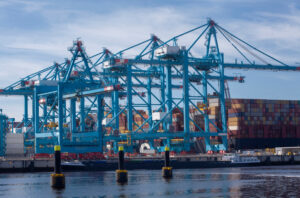S&P Global Ratings has released its top three findings on the risks that ports should be most aware of for the remainder of the year in its ‘Industry Top Trends 2018 Transportation Infrastructure’ report.
The first factor that the credit rating agency has highlighted is the shipping industry’s exposure to the volatile demand for coal and other minerals such as nickel, lithium, and gold.
This has been pressuring prices and pushing down the credit quality of miners in recent years, hampering the financial flexibility of coal port operators.
One example is the Wiggins Island Coal Export Terminal (WICET) in Queensland, which is currently in preliminary negotiations to restructure its debt and ownership.
Credit: Wiggins Island Coal Export Terminal
S&P has also found that Indian ports' exposure to commodities like coal has been reducing amid rising domestic coal production, while Indonesian ports are seeing an impact on exports, partly due to lower commodity prices.
Congestion is S&P’s second biggest reason for ports to take protective measures.
It reported that some facilities in China are suffering a capacity glut and competitive pressure because of their overlapped hinterlands and overspending.
This has led to a trend in government-led port integration, which aims to achieve cost-savings and reduce competition.
S&P also found that Indonesian ports, despite catering to their origin and destination traffic, are seeing the effects from changing demand and supply patterns within the country from east and west, which can decouple performance from economic growth.
Lars Jensen, CEO, SeaIntelligence, recently forecasted the industry’s developments as far into the future as 2025 in his 'Liner Shipping in 2025' technical paper
Third on S&P’s list of port vulnerabilities is regulatory risk.
Rising protectionism and the mixed impact of tax reform by the Trump administration might have a positive short-term impact, as tax cuts may encourage consumption and investment.
However, it may be negative to global trade and global port operators in the mid-to-long term if more manufacturers move back production lines to the US.
Unexpected negative government intervention for political and economic means will also remain a risk.
In China, falling container handling fees by major ports under the regulator's “anti-monopoly” claim are dampening these ports' profitability.
In Indonesia, the government has disallowed investments from some international companies in joint ventures with major port operators after being in operation for many years.
This has created uncertainties on cash repayment as well as future capex.
In response to the port risks, Mar Beltran (pictured above), Senior Director and Sector Lead for Infrastructure, EMEA at S&P Global Ratings, said: “We forecast that port infrastructure could continue to display strong credit profiles and a stable outlook.
“Helped by the high barriers to entry and limited competition in each local market, port infrastructure still delivers growth in volumes and healthy profit margins.
“The industry could enter a new phase of development, however, the expanding size of container ships is positive for hub ports, smaller neighbouring terminals or those with capacity limitations – who may cooperate in order to meet the demands of shipping alliances and withstand their bargaining power. Such cooperation may happen through partnerships or M&A activity.”












